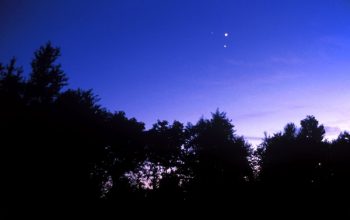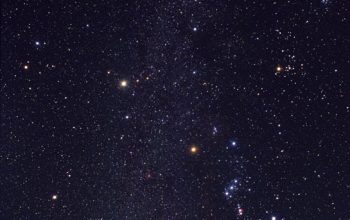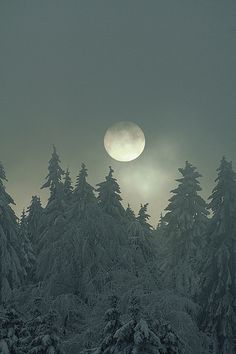Sunday, September 25th:
Venus will rise low in the west-southwest horizon about a half-hour after sunset. The Andromeda galaxy can be spotted using the constellation Cassiopeia as a reference, using the lower right vertex of the constellation’s W-shaped formation as an arrow pointing towards the galaxy. The Moon is 28% illuminated as a Waning Crescent, rising at 1:23 AM and setting at 3:52 PM.
Monday, September 26th:
The Moon and the star Regulus are visible next to each other tonight and tomorrow night. Regulus- the brightest star in the constellation Leo- resides near the lower right corner of the Moon. Before dawn is the ideal time to spot the star glimmering next to our satellite. The Moon is 19% illuminated as a Waning Crescent, rising at 2:24 AM and setting at 3:52 PM.
Tuesday, September 27th:
Spot Mercury and the Moon next to each other in the eastern sky during dawn Wednesday morning, ideally 45 minutes before sunrise. It also marks Mercury’s greatest elongation. The Moon is 12% illuminated as a Waning Crescent, rising at 3:24 AM and setting at 5:09 PM.
Wednesday, September 28th:
Check out Venus in the western sky closely following sunset. The Moon and Mercury can be seen together again in the eastern sky. Now, four planets can be seen in one night: Venus, Mars, and Saturn during the evening, and Mercury before dawn. The Moon is 6% illuminated as a Waning Crescent, rising at 4:24 AM and setting at 5:42 PM.
Thursday, September 29th:
The absence of the moon from the hours of dawn create a rare opportunity to witness the zodiacal light phenomena. Look to where the sunrise would appear about 80 to 120 minutes before dawn to view a “false sunrise”- that is, sunlight reflecting off particles residing within the zodiacal cloud, a region that occupies the Earth’s elliptic. The Moon is 2% illuminated as a Waning Crescent, rising at 5:24 AM and setting 6:13 PM.
Friday, September 30th:
The Moon is 0.1% illuminated as a New Moon, rising at 6:22 AM and setting at 6:43 PM. For readers in the US, this is the second full moon of the month, often referred to as a “Black Moon”.
Saturday, October 1st:
In the mid-northern latitudes, Deneb begins to take over Vega as the star at the zenith after dark. The Moon is 0.5% illuminated, rising at 7:19 AM and setting at 7:12 PM.
Sunday, October 2nd:
The Moon is 2.9% illuminated, rising at 8:16 AM and setting at 7:43 AM.
Happy stargazing!
-Julia
NOTE: Times for moonrise and moonset are calculated from our base in New York. Click here to get your local times.
Sources: Earth and Sky, Sky and Telescope, Timeanddate.com, moongiant.com
Published by Julia Mariani


